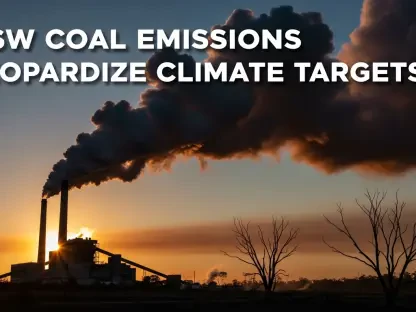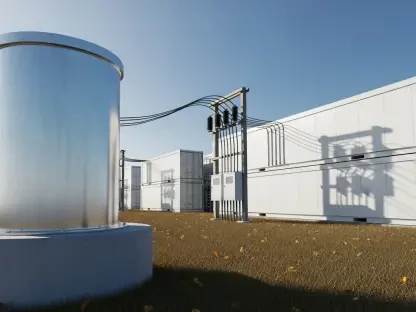Unpacking a Pivotal Energy Conflict in Central Europe
In the heart of Central Europe, a critical market disruption is unfolding as Hungary’s leading oil company, MOL, alongside its Slovak subsidiary Slovnaft, clashes with Croatia’s pipeline operator, JANAF, over the transportation of non-Russian crude oil. This dispute, centered on the strategic Adriatic pipeline, is more than a contractual disagreement—it’s a litmus test for the region’s energy security and the European Union’s broader push to reduce dependency on Russian energy sources. With Hungary and Slovakia historically tied to Russian crude via the Druzhba pipeline, the Adriatic route represents a lifeline for diversification, making this standoff a focal point for market analysts. This analysis dives into the implications of the conflict, dissecting current trends in energy supply chains, evaluating risks to regional stability, and projecting future outcomes for stakeholders in the oil and gas sector.
Deep Dive into Market Dynamics and Projections
Contractual Tensions: A Threat to Supply Chain Stability
The crux of this market disturbance lies in MOL and Slovnaft’s allegations that JANAF has unilaterally altered the terms of their agreement, imposing additional costs and conditions for oil transportation through the Adriatic pipeline. Specifically, the Hungarian and Slovak firms claim that JANAF is requiring the purchase of extra oil volumes as “technical amounts” to facilitate delivery of already scheduled crude, a move they argue jeopardizes secure supply to their refineries. This has led MOL to escalate the issue to the European Commission’s Directorate-General for Competition, signaling potential disruptions not only to their operations but also to compliance with EU mandates on phasing out Russian oil. The immediate market impact is a heightened risk of supply bottlenecks, particularly for Slovnaft’s Slovak refinery, which could ripple through downstream fuel markets in the region.
JANAF’s Counterposition: Operational Norms or Market Misalignment?
On the other side of the dispute, JANAF staunchly defends its practices, asserting that its operations align with agreed schedules, technical requirements, and industry standards. The Croatian operator highlights that MOL Group’s current usage of the pipeline falls significantly below contracted capacity, urging an increase in throughput to meet agreement terms. This perspective suggests a misalignment in market expectations rather than a deliberate breach, pointing to a broader challenge in harmonizing operational strategies amid volatile energy demands. For market observers, this raises questions about whether existing contractual frameworks are robust enough to handle the pressures of rapid diversification, especially as EU policies demand accelerated shifts away from traditional supply routes.
Geopolitical Underpinnings: Energy as a Regional Flashpoint
Beyond the immediate contractual friction, the dispute is steeped in geopolitical complexities that shape market sentiment. Hungary and Slovakia have long voiced concerns over the Adriatic pipeline’s capacity constraints and associated costs, often framing these issues within a broader critique of EU policies tied to the ongoing conflict involving Russia and Ukraine. The pipeline is not merely infrastructure but a geopolitical lever, embodying the tension between national energy priorities and collective EU objectives. Analysts note that such disputes could undermine investor confidence in Central Europe’s energy transition, potentially stalling infrastructure investments critical for long-term diversification. This geopolitical layer adds a risk premium to market forecasts, as unresolved tensions may deter stakeholders from committing to alternative supply projects.
Market Trends: Diversification Pressures and Infrastructure Challenges
Looking at broader market trends, the push for non-Russian crude oil sources is intensifying under EU regulatory frameworks, with the Adriatic pipeline positioned as a cornerstone of this shift. However, operational disputes like the one between MOL and JANAF expose vulnerabilities in infrastructure reliability, a critical concern as demand for alternative routes grows. Data suggests that pipeline utilization across Central Europe remains inconsistent, with capacity often underutilized due to pricing disagreements or logistical hurdles. Projections indicate that without streamlined contracts and enhanced infrastructure resilience, the region risks falling short of diversification targets by 2027, potentially leading to sustained reliance on less secure supply chains. Market players are thus closely monitoring how this conflict evolves, as it could set a precedent for future operator-client relationships.
Future Projections: Navigating Uncertainty in Crude Supply Chains
Forecasting the trajectory of this market disruption, several factors loom large. Technological advancements in pipeline monitoring and capacity optimization could mitigate operational disputes, but they require significant capital outlays and stakeholder alignment—elements currently lacking in this scenario. Economically, fluctuating crude oil prices and transportation tariffs may exacerbate tensions, pushing companies like MOL to seek parallel supply routes or renegotiate terms under duress. Regulatory intervention by the European Commission might also reshape the landscape, potentially enforcing stricter oversight on critical energy infrastructure. Over the next few years, the market could see a recalibration of risk assessments, with investors prioritizing projects that demonstrate contractual clarity and geopolitical neutrality to avoid similar standoffs.
Reflections on Market Implications and Strategic Pathways
Reflecting on the insights unearthed in this analysis, the MOL-JANAF dispute has underscored the fragility of Central Europe’s energy diversification efforts at a pivotal moment. The contractual rift, compounded by geopolitical undercurrents, has revealed deep-seated challenges in aligning operational practices with strategic imperatives, threatening supply stability for key players like MOL and Slovnaft. For industry stakeholders, the path forward demands a focus on crafting more adaptive contractual frameworks that account for geopolitical volatility and market fluctuations. Policymakers must consider establishing mediation mechanisms to preempt escalation of similar disputes, while companies need to invest in contingency planning, exploring alternative routes to bolster resilience. Ultimately, the resolution of this conflict offers a blueprint for navigating the intersection of energy security and market dynamics, urging a collaborative approach to safeguard the region’s energy future.









